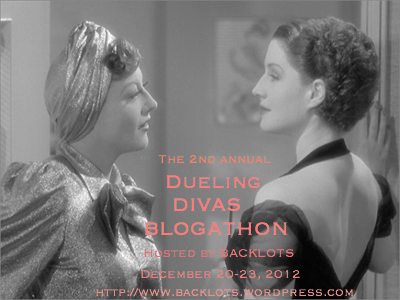
Marion Davies and real-life director King Vidor in a scene from “Show People.”
By Lara Gabrielle Fowler
For many decades, Hollywood has been fascinated with movies about movies. Ranging from the highest celebrations of Hollywood stardom (Singin’ In the Rain) to analyses of the most terrible tragedies of the industry (A Star is Born), the films that come out of this penchant for self-examination consistently do extremely well at the box office to this day, often winning major industry awards and proving that audiences and critics alike share this passion for “Hollywood on Hollywood.”
Singin’ In the Rain (1952), about the coming of sound to Hollywood, has earned a place as the only musical in the top 10 of “AFI’s 100 Years…100 Movies” list.
Argo (2012), about a plot to rescue Iranian hostages by creating a blockbuster Hollywood movie, won the Oscar for Best Picture last year.
Self-awareness in movies dates back to the earliest days of cinema. Mack Sennett often appeared as himself in the Keystone Kops movies, acknowledging the disconnect between reality and the movies and making an attempt to sew them together to create a fluid illusion for the audience member. In “The Playhouse” (1921), Buster Keaton attends a show in which he plays all the parts. He (as his character) quips “This Keaton fellow seems to be the whole show!” This was a nudge to the audience, a peek over the 4th wall to let the audience know that Keaton is aware of himself as an actor.
Building on these early indications of self-awareness, the first full-scale “Hollywood on Hollywood” movie appeared in 1928 with the King Vidor comedy Show People, about the transformation of a young country girl into a major movie star. Starring Marion Davies and based on the early career of Gloria Swanson, Show People is a thorough and intelligent look at the complexities of stardom, and its quality rivals that of the later movies who drew from its precedent. It is truly a movie that, despite the passage of 85 years, solidly stands the test of time.
Peggy Pepper is the young Georgia girl who wants to be in movies, so her father drives her out to Hollywood where she lands a contract as a comedic bit player, often getting squirts in the face with seltzer water. She befriends a fellow comedic actor named Billy Boone, and they act together in low-budget films while remaining best of friends offscreen. At the screening of her first movie, Peggy gets an autograph request from none other than Charlie Chaplin (playing himself in a cameo) and promptly faints. Several other stars make cameos in the film, including Marion Davies herself. When Peggy sees Marion Davies, she reacts with disdain, an extremely clever demonstration of the film’s self-awareness.

Marion Davies as “Marion Davies.”
Soon, Peggy is signed to “High Art Studios,” where she becomes a big star and slowly loses touch with society as her ego grows. She shuns Billy Boone as a lower-class actor, even though he tries desperately to maintain their friendship and bring her back to reality. She runs into him on a film set and reacts coldly to him, until he squirts her with seltzer water like he used to in their low-budget films together. She becomes enraged and storms off.
Shortly thereafter, she is informed by her studio head that theaters around the country are pulling her movies because her image is becoming too snooty. She is about to get married to a fake count Andre Telefair, when Billy bursts in and squirts her in the face with seltzer water, then throws a pie in the face of the fake count. This brings Peggy to her senses, and she and Billy make up. Peggy’s next movie is set in a World War I village, and she convinces director King Vidor (the real life director of Show People), to hire Billy as her new leading man, as a surprise. Billy is thrilled to see that Peggy is his leading lady, and the film ends as Peggy and Billy kiss on the set of their new movie together.
Show People is one of the finest silent movies to come out of the 1920s. It is strikingly modern, and could easily have been made today, needing very few changes. Though it is a comedy, one can see the influence it had on such later Hollywood on Hollywood movies such as A Star is Born, chronicling a male actor’s assistance to an actress, and that star witnessing her rise over his. It is said that this movie is loosely based on the career of Gloria Swanson, who later starred in her own Academy Award-winning film about Hollywood–the incomparable Sunset Boulevard.
See you next time!



























_03.jpg)


Marion’s talent shines in this film. She’s “a shimmering, glowing star in the cinema firmament.”
WONDERFUL POST!
________________________________
Thanks for such a great post. “Show People” was my first Marion Davies movie and I only saw it quite recently. I can now see why people loved her in person as she glows through the screen in his picture. Count me as a fan!
You’ve intrigued me with this post, Lara, and I would love to see “Show People.” Very interesting points about the movies about movies as well. I have to tell you, I have seen the ending of “Sunset Boulevard” many times, but even after watching the funny clip from “Show People”, I still get tears in my eyes watching Norma Desmond descend the stairs into complete madness.